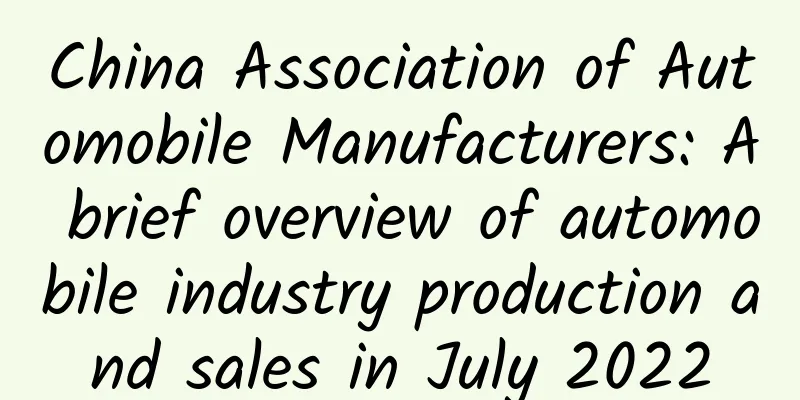How much more would it cost to return iPhone production to the U.S.?

|
Not long ago, the newly elected President of the United States, Trump, said in a recent interview with the New York Times that he received calls from Apple CEO Tim Cook and Microsoft founder Bill Gates after winning the election. During the call with Cook, Trump talked about how it would be "a big achievement" if Apple manufactured its products in the country. Originally, Trump just talked about it and did not attract much attention. Shortly after his speech, Bloomberg columnist Tim Culpan wrote a column in the tone of Guo Taiming, satirizing Trump's ideas. But Trump did not stop. He first talked to Tsai Ing-wen on the phone, and then said that China needs to pay for the "one China" principle, which shocked the whole world, so that the White House hurriedly came out to clarify. From Trump's statement, it can be seen that China has been used as an object of blackmail. Moving manufacturing back to the United States is not just talk, but his wish is sincere. So, can the iPhone really return to the United States? If the iPhone really returns to the United States, what will it bring to the mobile phone industry? 1. How much more will it cost for the iPhone to return to the United States for production? In fact, the issue of the iPhone returning to the United States was discussed as early as the Obama era. The "MIT Technology Review" discussed three options in June this year: one is that the world provides raw materials, the world produces components, and the United States assembles; the second is that the world provides raw materials, the United States produces components, and the United States assembles; the third is that the United States provides raw materials, the United States produces components, and the United States assembles. If the first option is adopted, Apple will need to pay more transportation costs and labor costs. This is because the components of the iPhone are mainly concentrated in Asia. The iPhone screen is from Japan and South Korea, the chip is from South Korea and Taiwan, the lens is from Taiwan, the memory chip is from Japan and South Korea, the camera module is from Taiwan and the mainland... Returning to the United States for manufacturing means lengthening the transportation distance of these components. They have to be shipped from Asia to North America, so more logistics costs have to be paid; at the same time, due to more labor costs, the labor cost in the United States is higher, so more workers need to be paid to assemble iPhones in the United States. According to estimates, if the first option is adopted, the production of an iPhone will increase by at least 30-40 US dollars. This is the lowest of the three options. If the second option is adopted, that is, "the world provides raw materials, the United States produces components, and the United States assembles", in addition to paying the extra logistics costs and labor costs, it is also necessary to pay the cost of building a production line. Taking semiconductor chips as an example, in addition to the core processor, an iPhone also needs baseband chips, sensors, NFC controllers, touch screen drivers, RF amplifiers and receivers and other chips. These chips are provided by manufacturers such as Qualcomm, Texas Instruments, and ENHP, and their factories are located in China, South Korea, and Japan. If the second option is adopted, it means that all the factories of these chip manufacturers will be moved back to the United States. To this end, they need a large amount of industrial equipment to build a complete semiconductor production line, with an overall investment of billions of dollars. After the production line is completed, it is not a one-time thing. They will become obsolete a few years after they are built, so they need to be continuously maintained and updated in the middle. This means a lot of costs. These costs will eventually be included in the iPhone. If the second option is adopted, the price of the iPhone will increase by 60-100 US dollars. As for the third option - "the United States provides raw materials, the United States produces components, and the United States assembles", the United States cannot do it at all in today's globalized world. From mineral products to costs, there are too many things to move. Therefore, according to optimistic estimates, the price of the iPhone will increase by 30-100 US dollars when it returns to the United States. 2. It's not just a matter of money If it's just a cost increase, then Trump can make up for it by giving Apple a substantial tax cut (in fact, the effect of this tax cut itself is very suspicious, because Apple is a master of tax evasion, and the money does not return to the United States). But iPhone manufacturing is not just a matter of money. Cook said in an interview with the American media that China attaches great importance to manufacturing, which is what we call vocational technology. The United States stopped training so many types of workers a long time ago. If all American machine workers and mold workers were gathered together, this room we are in would be full. What about China? I'm afraid it would take several football fields. In fact, the scale of China's workers is far more than several football fields. There are 20,000 people in a mold city in China, several mold cities in a mold base, and n mold bases in a province. The number of employees can support a city. Unless the United States opens up immigration and labor imports on a large scale, Apple will not be able to find enough workers when it moves back. You can give money, but you can't just give people. It takes at least a few years to train a person into a technician, and this requires that there is no problem with basic education, but the basic education in the United States is problematic. Community division makes it difficult to guarantee the quality of education at the bottom, and it is very difficult to transform street gang members into technicians. In addition to quantity, the efficiency gap is even greater. A former Apple executive once described it to the New York Times: "Apple changed the iPhone screen design at the last minute, causing the entire assembly line to need to be modified. The new screen panel arrived at the factory at midnight. A foreman immediately gathered 8,000 workers in the company's dormitory, gave each person a biscuit and a cup of tea, and took their positions within half an hour to start a 12-hour work shift. They embedded each new screen into the panel. In just 96 hours, the factory's output reached 10,000 iPhones a day. Their (Chinese workers) speed and flexibility are incredible, and no American factory can match them." Today's American workers simply cannot afford the high-intensity labor of Chinese workers. To afford it, the cost is not something that can be solved by $30-100 for a mobile phone. 100 years ago, there were workers in the United States who ate lunch in the air on steel beams more than 100 meters high. And with today's welfare, Americans cannot accept the intensity of labor at Foxconn in China. If all these costs are finally added to the product, some people have estimated that the cost of the iPhone is not a matter of increasing by $100, but will double to $400-500, and the transition period will be very long. Therefore, it is very, very difficult for the iPhone to return to the United States. 3. The impact of the Sino-US trade war on Chinese mobile phone manufacturers If the iPhone can return to the United States for manufacturing at a huge cost, there is only one situation, that is, the Sino-US trade war breaks out, the United States imposes super-high tariffs on China, and at the same time gives Apple high subsidies and tax cuts in the United States, making the cost of Apple manufacturing in China higher than the cost. If this happens, the impact will not only be on Apple, but all Chinese mobile phone manufacturers. During the campaign, Trump once threatened to impose tariffs of up to 45% on products imported from China. If this policy can be implemented, it will obviously be very bad for Chinese companies. However, unlike textile manufacturers, Chinese mobile phone manufacturers have a small share of the US domestic market. Even at the current tariff rate, Chinese mobile phone manufacturers have not entered the top five in the US smartphone market. Therefore, the Sino-US trade war does not pose a direct threat to Chinese mobile phone manufacturers. However, we must see that China is not only a mobile phone manufacturer, but also a lot of export-oriented companies, and most of their employees are using domestic mobile phones. If the Sino-US trade war breaks out, the high tariffs imposed by the United States will mean that these companies will see a decrease in orders, lower wages for workers, and a decline in spending power. The real threat is that the domestic market will be damaged in the Sino-US trade war. In addition, the US trade war will inevitably trigger retaliation from China. In the mobile phone industry, Qualcomm will be the first to bear the brunt, and its chips will also be subject to high tariffs. This means rising costs for many Chinese mobile phone companies. Rising costs and reduced markets are undoubtedly bad news. Although the direct impact of the Sino-US trade war is not significant, the indirect impact cannot be ignored by Chinese mobile phone manufacturers. So, how do Chinese manufacturers deal with this problem? We must see that American consumers are accustomed to cheap goods. When Chinese goods are no longer cheap due to tariffs, these consumers will inevitably supplement them with imported goods from other third world countries, which means that the purchasing power of countries such as Vietnam and India will increase. Therefore, accelerating the internationalization process, not putting all eggs in one basket, and accelerating the development of overseas markets are the way out for Chinese mobile phone manufacturers. Although many third world countries are quite unreliable (such as India's demonetization policy), the future market is there, and we have no way out.As a winner of Toutiao's Qingyun Plan and Baijiahao's Bai+ Plan, the 2019 Baidu Digital Author of the Year, the Baijiahao's Most Popular Author in the Technology Field, the 2019 Sogou Technology and Culture Author, and the 2021 Baijiahao Quarterly Influential Creator, he has won many awards, including the 2013 Sohu Best Industry Media Person, the 2015 China New Media Entrepreneurship Competition Beijing Third Place, the 2015 Guangmang Experience Award, the 2015 China New Media Entrepreneurship Competition Finals Third Place, and the 2018 Baidu Dynamic Annual Powerful Celebrity. |
<<: AMD's new top-level graphics card debuts: Can it really beat GTX 1080?
Recommend
May 4th Youth Day丨100,000 meters of youth! How many meters are you at?
Youth is full of vitality Spreading down and taki...
Tencent advertising paid promotion account opening and recharge!
How to open an account and recharge on Tencent Ad...
User-centric? Why not sit down and do an in-depth user interview?
"User-centric" is the consensus of Inte...
These 9 eating habits are very harmful to the stomach! The first one is done by many people every day
Every stomach goes from good to bad These are not...
What exactly is the recently popular VoLTE technology?
When it comes to voice and video calls, what do y...
Community operation construction and activity methods!
Let me ask you directly, have you ever encountere...
618 Marketing Promotion Plan Creation Guide, 1 Step to Get It Done
Every marketing plan with soul must not be a pile...
Cases + Data | Is the effect of investment in the education industry poor? That’s because you didn’t choose the right channel!
Every year from July to September, when summer va...
How does a P2P platform choose high-quality channels?
As we all know, the cost of acquiring P2P custome...
Xiaohongshu keyword optimization and promotion marketing skills!
The rapid development of Xiaohongshu has diversif...
TikTok Overseas Short Video Sales Training Camp, the Most Profitable Blue Ocean Market for Short Video Sales in 2022
TikTok Overseas Short Video Sales Training Camp, ...
Community operation: How to recruit 500 users from a cold start?
At the beginning of the 20th century, various &qu...
How are video ads delivered? Operation process!
As netizens' reading habits become increasing...
A red-crowned crane walking down the street? It probably doesn't need to be watched...
In the first few days of 2024, Northeast China ha...
What is WebWorker?
Preface Front-end engineers must have had this ex...









